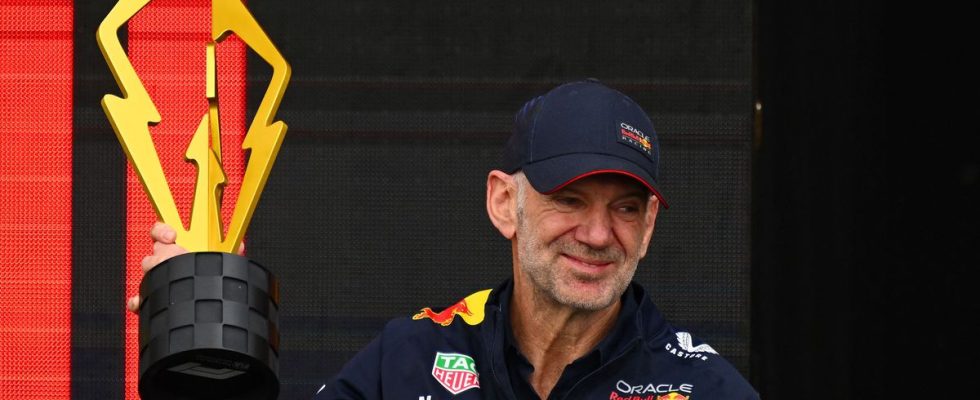Recruit an engineer at exorbitant prices, pay him for a year, without him being able to work. An unthinkable situation, and which nevertheless exists in Formula 1 as revealed by several recent transfers of engineers between teams. David Sanchez, head of performance at Ferrari will join McLaren, who also managed to poach Rob Marshall one of the pundits of RedBull, while Laurent Mekies, current number 2 of the Scuderia will take the helm of Alpha Tauri, under a different name. , next season. Although details are still to be settled.
More recently, Frenchman Frédéric Vasseur, head of Scuderia Ferrari, announced that he had “signed one of the best” engineers in the paddock a few weeks ago. Problem, he will only join Ferrari in “2025” to work “on the car in 2025 and 2026”. This practice has a name, the “garden leave”, which imposes a latency period on engineers before joining their new stable. “We know that if we want to recruit, we don’t speak in days but in years”, confided Frédéric Vasseur to Motorsport about this period of inactivity.
A sharp and extremely competitive sector
Éric Boullier, former team principal of Renault, Lotus and McLaren, tells us that this practice has “always” existed in Formula 1, with variable periods depending on the importance of the engineer. A “top” engineer must respect a minimum period of “one year”, while for an “important” engineer this period is reduced to “six months”.
A way to protect yourself from industrial espionage in a sector as sharp as it is competitive. “F1 has this particularity of reinventing a new car every year. Leaving an engineer aside for twelve months means that he is not in contact with this project, and that he does not have any important secrets to bring to his new team,” he specifies.
As much a “pilot’s sport” as an “engineer’s sport”
Today each team surrounds itself with headhunters to recruit the best engineers, but this neuron race already existed “twenty-five years ago”, with Adrian Newey, in particular. This engineer is even considered the best Formula 1 designer in the world. And after having designed those of Williams and then McLaren in the 1990s and 2000s, he joined RedBull in 2008. His arrival also made it possible “to bring credibility to the project and to seek out the best engineers”, recalls the former Team Manager.
Engineers are also becoming more and more important within Formula 1 teams, which is no longer a “one man show”, but a collective work, underlines Julien Simon-Chautemps, former track engineer for Kimi Raïkkönen. and who will be commenting on the free sessions of the Silverstone Grand Prix this weekend on Canal+. If in the 1990s, a team of 1 was made up of 80 people, today it brings together no less than 800 employees, and even more for the top teams, spread over different departments: engine, aerodynamics, mechanical design, track and performance. , to sum up.
An evolution of structures which has gradually transformed F1, which has become an “engineering sport” as much as a pilot’s sport”, according to Julien Simon-Chautemps. “Their roles are very important, the top engineers like Adrian Newey are paid almost as much as the pilots, they are tens of millions of euros per year. Because an engineer like him says “I can make you win, like the drivers”, even if it’s still quite rare, “says the man who recently created his motorsport consulting firm.
A “group” behind the engineer
Money is obviously one of the main levers to attract the best elements, and the teams have a certain margin in this area since the three highest salaries of the team are excluded from the “cost cap”, set up in 2021. But the project matters just as much. “They are very sensitive to the sports project, to the stability of the project. 90% of the engineers will go to a team in a position to win races, but the project can also be important to be able to win races or even a championship in the medium term. This is why today Aston Martin is very courted with the construction of its new factory, with a financial, industrial and sporting project which brings great credibility”, explains Eric Boullier.
But don’t expect these engineers to revolutionize the team overnight. Rob Marshall, number 5 or 6 at RedBull, “has been in contact with this culture and he will have a lot to contribute in terms of managerial change. Provided that it is listened to and that this culture is applicable. But in any case it will not change overnight, and an engineer of this caliber drains behind him between 40 and 80 people. This implies a lot of changes”, warns Eric Boullier.
Which is in line with the words of Julien Simon-Chautemps: “We are no longer in the 1990s when an engineer could almost make his team win on his own. Frédéric Vasseur may have recruited a top engineer from RedBull, or Mercedes, to bring his know-how, but it’s a set. There is all the staff, the procedures, and we won’t see the change on the track for a while, ”he warns. To the point of seeing Frédéric Vasseur regret the “inertia” of the discipline, but foreseeing and anticipating remains the basic element of Formula 1.

